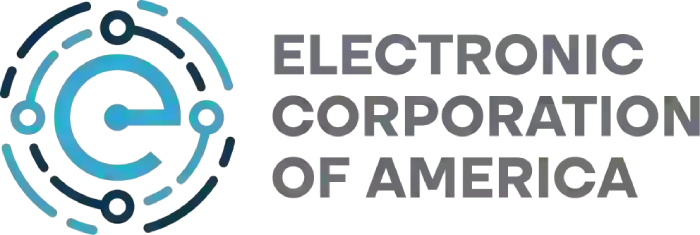9 Ways Equipment Financing Can Cut Costs and Increase ROI

Equipment financing represents a strategic approach to business growth that enables companies to acquire essential machinery, technology, and tools without depleting their cash reserves. Despite common myths of equipment financing that suggest it’s too expensive or complicated, modern solutions have evolved to become more accessible and beneficial than ever. This comprehensive guide explores nine proven methods through which equipment financing can significantly reduce operational costs while maximizing return on investment.
What Is Equipment Financing and Why It Matters
Modern businesses face increasing pressure to remain competitive while managing cash flow effectively. One solution to this challenge is accessing cutting-edge technology and machinery without the substantial upfront investment typically required.
Specialized lending solutions now enable companies to acquire or lease the tools they need while preserving working capital. Unlike traditional loans, these solutions often use the purchased equipment as collateral, which helps streamline the approval process and reduce risk. In addition, modern digital platforms have revolutionized this process by offering faster and more transparent application experiences.
1. Preserve Working Capital for Strategic Operations
Maintain Cash Flow Stability
Equipment financing prevents the massive cash outflow that comes with purchasing equipment outright. Instead of depleting your bank account with a single large purchase, you can spread payments over 12 to 84 months, maintaining steady cash flow for daily operations.
Enhance Financial Flexibility
By preserving working capital, businesses can respond quickly to unexpected opportunities or challenges. This financial cushion enables companies to take advantage of bulk purchasing discounts, invest in marketing campaigns, or weather temporary downturns without compromising their equipment needs.
Support Multiple Growth Initiatives
When cash remains available, businesses can pursue various growth strategies simultaneously. You might finance manufacturing equipment while still having funds available for hiring new employees, expanding into new markets, or developing new products.
2. Leverage Tax Benefits and Deductions
Section 179 Deduction Advantages
The Section 179 deduction allows businesses to deduct the full purchase price of qualifying equipment in the year of purchase, up to $1.16 million for 2023. This immediate tax benefit can significantly reduce your tax liability while improving cash flow.
Bonus Depreciation Opportunities
Equipment financing often qualifies for bonus depreciation, allowing businesses to deduct a significant percentage of the equipment’s cost in the first year. This accelerated depreciation schedule provides immediate tax relief and improves overall return on investment. Understanding equipment financing tax benefits is crucial for maximizing the financial advantages of your equipment acquisition strategy.
Interest Deduction Benefits
The interest paid on certain types of business financing is typically tax-deductible as a legitimate business expense. This deduction can significantly reduce the effective cost of borrowing and improve the overall economics of acquiring essential assets. Many business owners often ask, “Is interest on business financing tax deductible?” — and the answer is generally yes, making such financing methods even more appealing from a financial standpoint.
3. Access Advanced Technology Without Upfront Investment
Stay Competitive with Latest Equipment
Technology evolves rapidly, and businesses must keep pace to remain competitive. Equipment financing enables access to state-of-the-art machinery and technology without waiting to accumulate sufficient cash reserves. This approach is particularly valuable for tech startup equipment financing, where having cutting-edge equipment can make the difference between success and failure in competitive markets.
Reduce Obsolescence Risk
By financing equipment with shorter terms, businesses can upgrade more frequently, reducing the risk of being stuck with outdated technology. This approach ensures your operations remain efficient and competitive.
Implement Multiple Technology Solutions
Equipment financing allows businesses to implement comprehensive technology solutions across different departments simultaneously. You can upgrade your manufacturing equipment, office technology, and transportation fleet concurrently. For companies operating in the virtual private server market, this might include financing server infrastructure, networking equipment, and outsourced server monitoring systems to ensure optimal performance and minimize common server problems.
4. Improve Cash Flow Management
Predictable Monthly Payments
Equipment financing provides predictable monthly payments that make budgeting and cash flow management more straightforward. This predictability helps businesses plan other investments and expenses more effectively.
Align Payments with Equipment Usage
Equipment financing terms can be structured to align payments with the equipment’s productive use. Seasonal businesses can arrange payment schedules that match their revenue cycles, improving cash flow management.
Reduce Financial Planning Complexity
Fixed monthly payments eliminate the uncertainty associated with variable costs, making financial planning more accurate and reliable. This stability supports better decision-making and strategic planning. Cost effective equipment financing solutions provide predictable expenses that help businesses maintain healthy cash flow while investing in growth.
5. Accelerate Business Growth and Expansion
Increase Production Capacity
Equipment financing enables immediate capacity expansion without waiting for cash accumulation. Businesses can respond quickly to increased demand, secure new contracts, and grow revenue faster than competitors.
Enter New Markets
Specialized equipment often opens doors to new markets and customer segments. Equipment financing makes it possible to diversify your offerings and revenue streams without significant upfront investment.
Improve Service Delivery
Modern equipment often improves service quality, delivery times, and customer satisfaction. These improvements can lead to increased customer retention, higher prices, and improved profitability. Business equipment upgrades financed through structured payment plans enable companies to enhance their service offerings without compromising cash flow.
6. Enhance Operational Efficiency
Reduce Maintenance and Downtime Costs
Newer equipment typically requires less maintenance and experiences fewer breakdowns. Equipment financing enables regular upgrades that minimize downtime and maintenance expenses, improving overall productivity.
Improve Energy Efficiency
Modern equipment often operates more efficiently than older models, reducing energy consumption and operational costs. The savings on utility bills can help offset financing payments.
Increase Productivity Per Employee
Advanced equipment often enables employees to be more productive, increasing output per hour worked. This improved efficiency can lead to higher revenue per employee and better profit margins.
7. Build and Strengthen Business Credit
Establish Credit History
Equipment financing helps businesses build credit history with timely payments. A strong credit profile makes it easier to secure future financing at better terms for additional growth opportunities.
Demonstrate Financial Responsibility
Successfully managing equipment financing demonstrates financial responsibility to other lenders, suppliers, and potential investors. This reputation can lead to better terms on future financing and business relationships.
Improve Credit Utilization
Equipment financing is often considered less risky than unsecured debt, potentially improving your overall credit profile and making additional financing more accessible.
8. Reduce Total Cost of Ownership
Lower Maintenance Costs
Newer equipment typically comes with warranties and requires less maintenance, reducing the total cost of ownership. These savings can be substantial over the equipment’s useful life.
Improved Reliability
Modern equipment is generally more reliable, reducing unexpected repair costs and production disruptions. This reliability translates to more predictable operating expenses and better financial planning.
Higher Resale Value
Well-maintained, relatively new equipment retains higher resale value. If you decide to upgrade before the financing term ends, the equipment’s residual value can help offset the remaining balance.
9. Gain Competitive Advantages
Respond Quickly to Market Changes
Equipment financing enables rapid response to market opportunities or competitive threats. While competitors save for equipment purchases, you can implement solutions immediately and gain market share.
Offer Superior Service
Advanced equipment often enables superior service delivery, helping you differentiate from competitors. This advantage can justify premium pricing and improve customer loyalty.
Attract Quality Employees
Modern, well-maintained equipment makes your business more attractive to skilled employees. Better equipment can improve workplace safety, efficiency, and job satisfaction.
Choosing the Right Equipment Financing Solution
Evaluate Your Specific Needs
Consider factors such as equipment type, usage patterns, cash flow requirements, and growth plans when selecting financing options. Different types of equipment may require different financing approaches.
Compare Financing Options
Equipment financing comes in various forms, including loans, leases, and hire-purchase agreements. Each option has different benefits and considerations that should align with your business objectives.
Work with Experienced Providers
Choose financing providers with experience in your industry and equipment type. Industry-specific knowledge can lead to better terms and more suitable financing structures. Tech enabled equipment finance solutions often provide faster approval processes and more flexible terms than traditional financing methods. Many providers now offer fast equipment financing with approval times as short as 24-48 hours.
Maximizing ROI Through Strategic Implementation
Develop a Comprehensive Plan
Create a detailed plan that outlines how the financed equipment will generate returns. Consider factors such as increased productivity, cost savings, and revenue growth opportunities.
Monitor Performance Metrics
Track key performance indicators to ensure the equipment is delivering expected returns. Regular monitoring helps identify opportunities for optimization and future equipment needs.
Plan for Future Needs
Use the success of current equipment financing to plan for future equipment needs. A strategic approach to equipment financing can create a continuous cycle of growth and improvement.
Frequently Asked Questions
What types of equipment qualify for financing?
Most business equipment qualifies for financing, including manufacturing machinery, construction equipment, medical devices, technology systems, vehicles, and office equipment. The key requirement is that the equipment must be used for business purposes and have a useful life that extends beyond one year.
How much can I finance for equipment purchases?
Equipment financing amounts typically range from $10,000 to several million dollars, depending on the lender and your business’s creditworthiness. Many lenders will finance up to 100% of the equipment’s cost, including installation and training expenses.
What credit score do I need for equipment financing?
Most lenders require a minimum credit score of 600-650 for equipment financing, though some specialized lenders work with lower scores. Higher credit scores typically result in better interest rates and more favorable terms.
How long are typical equipment financing terms?
Financing terms for business asset acquisitions typically range from 12 to 84 months, depending on the asset’s expected useful life and value. Heavy machinery and durable assets may qualify for longer terms, while rapidly evolving technology or electronics often come with shorter terms due to concerns about obsolescence and depreciation.
Can I finance used equipment?
Yes, many lenders offer funding options for used business assets, although the terms and interest rates may differ from those for new purchases. Used items often require a higher down payment and may come with shorter repayment periods due to factors like reduced resale value and limited remaining useful life.
What happens if I want to upgrade equipment before the financing term ends?
Many financing agreements include upgrade options or early payoff provisions. Some lenders offer refinancing options that allow you to roll remaining balances into new financing for upgraded equipment.
Are there any restrictions on how I use financed equipment?
Generally, you must use the equipment for business purposes as outlined in your financing agreement. The equipment typically cannot be sold or moved without lender approval, and you’re responsible for maintaining insurance coverage.
How does equipment financing affect my business taxes?
Certain business asset acquisition strategies can provide significant tax benefits, including potential Section 179 deductions, bonus depreciation, and interest expense deductions. To fully understand how these benefits apply to your specific situation, it’s important to consult with a qualified tax professional who can guide you based on your business’s unique financial profile and goals.
Can startups qualify for equipment financing?
Yes, startups can qualify for business funding solutions, although they may encounter stricter requirements. Can a startup secure financing for essential assets? Absolutely. Lenders typically evaluate strong business plans, relevant industry experience, and the personal credit history of the founders when reviewing applications. Specialized funding programs are designed to help new businesses access the tools and resources they need to successfully launch and grow.
What documentation do I need for equipment financing approval?
Typical documentation includes business financial statements, tax returns, bank statements, equipment quotes, business licenses, and personal financial information for business owners. Some lenders may require additional documentation based on your specific situation.
Conclusion
Strategic asset acquisition represents a powerful approach for businesses aiming to reduce costs while maximizing return on investment. By preserving working capital, leveraging tax benefits, gaining access to advanced technology, and improving operational efficiency, companies can unlock significant competitive advantages through well-structured funding solutions.
The key to success lies in understanding your specific operational needs, selecting the right acquisition or leasing strategy, and partnering with experienced providers who understand the unique demands of your industry. When implemented strategically, these solutions can fuel a positive cycle of growth, productivity, and long-term profitability.
Consider modern asset acquisition not merely as a funding mechanism—but as a strategic investment in your company’s future. The nine methods outlined in this guide serve as a roadmap for achieving growth objectives while maintaining financial stability and operational agility.




No comment